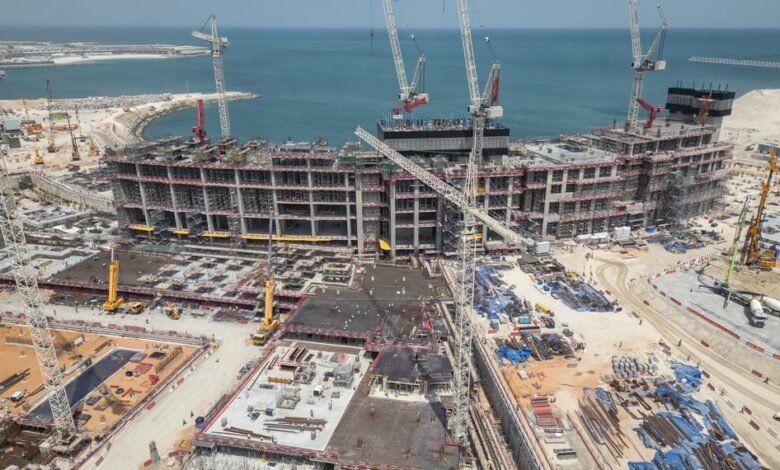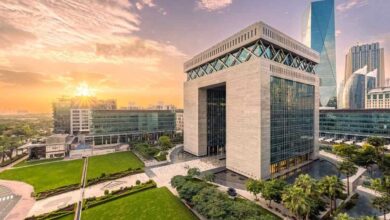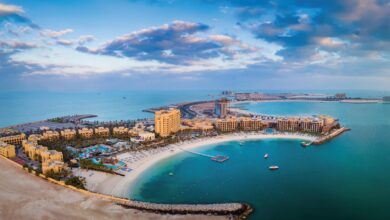
Al Marjan Island, the flagship development of Ras Al Khaimah (RAK), is on track for a significant real estate boom.
The development of Wynn Resorts’ first casino in the UAE, combined with strategic government initiatives and infrastructure upgrades, is expected to propel real estate prices to an unprecedented Dhs10,000 per square foot by 2030.
The current price range of Dhs1,500-3,000 per square foot on Al Marjan Island reflects a market in the early stages of transformation.
The integration of high-end luxury developments, foreign investment inflows, and a growing tourism sector are set to make Al Marjan Island one of the most lucrative property markets in the region.

Read: Wynn Resorts secures UAE’s first commercial gaming licence
The casino effect: Global trends and RAK’s future
Since the liberalisation of Macau’s gaming industry in 2002, property prices have risen dramatically. Real estate growth is not only driven by the influx of tourists but also by the demand for premium residential properties from wealthy investors and high-net-worth individuals (HNWIs).
In the US, Las Vegas has long been a benchmark for understanding the impact of casinos on local economies. Following the development of The Strip and the boom of mega-casinos in the 1990s, Las Vegas real estate saw a period of explosive growth. In Asia, the launch of Marina Bay Sands back in 2010 catalysed Singapore’s luxury property market.
The Q3 2023 Singapore Research Market Report by Knight Frank shows that global HNWIs have notably increased their interest in Singapore’s luxury property market, as reflected by the total sales volume of prime non-landed residential units reaching $737m in the first half of 2024.
With the Wynn resort slated to open by 2026, Al Marjan Island is positioned to replicate these patterns, as luxury properties and exclusive beachfront developments become hot commodities for both local and international buyers. But what are exactly the key growth indicators in Ras Al Khaimah?
Tourism growth and infrastructure investment
In a recent interview, the CEO of Ras Al Khaimah Tourism Development Authority Raki Phillips stated that Ras Al Khaimah aims to attract 3.5 million overnight visitors and an additional 1.5 million day visitors by 2030, supported by plans to double its hotel room capacity and expand the RAK International Airport to accommodate two million annual visitors.
Al Marjan Island, the focal point of this expansion, will directly benefit from this surge. As Ras Al Khaimah improves its infrastructure and airport connectivity, Al Marjan Island’s real estate market is set to experience significant price increases.
Foreign investment and freehold property laws
Al Marjan Island in Ras al Khaimah offers attractive freehold property ownership options for expatriates and foreign investors.
A recent Knight Frank report reveals that Ras Al Khaimah ranks as the fourth most popular property investment destination in the UAE for global HNWIs, attracting significant foreign capital after Dubai (67 per cent), Abu Dhabi (23 per cent), and Sharjah (5 per cent).
This influx of foreign capital is anticipated to push real estate prices higher, especially in prime locations like Al Marjan Island.
Luxury real estate growth in the UAE
According to REIDIN’s 2024 Residential Property Price Report, the UAE’s residential property market showed notable growth, with Dubai’s Residential Property Sales Price Index increasing by 1.81 per cent compared to the previous month and 20.72 per cent year-on-year.
As Al Marjan Island continues to attract luxury brands, investors can expect to see prices soar toward Dhs10,000 per square foot, in line with broader UAE market trends.
Government incentives and economic diversification initiatives
Ras Al Khaimah is actively pursuing economic diversification beyond tourism and real estate. Government incentives such as tax breaks, relaxed regulations, and investment in emerging sectors like manufacturing, technology, and renewable energy are attracting international businesses. Such initiatives strengthen economic resilience and contribute to real estate demand, as businesses and expatriates move into the region.
Expanding entertainment and leisure offerings
The development of entertainment venues, such as theme parks, retail destinations, marinas, and beachfront activities, is creating a lifestyle that appeals to both tourists and long-term residents.
The expanding leisure sector not only enhances the attractiveness of the region but also contributes to increased demand for luxury residential and vacation properties, which further drives up real estate prices.
The writer is the CEO and founder of Cledor.





